From Fluff to Fabulous
It’s molting season for our Little Blue Penguins — the time of year when they lose old feathers, grow fresh new ones and rock some seriously fluffy looks.
Penguin feathers aren’t just for show — they insulate their bodies and keep penguins waterproof, which is essential for diving in cold ocean waters. So once a year, our penguins go through a serious glow-up and replace all their old, “worn-out” feathers with new ones.
This process is known as a catastrophic molt!
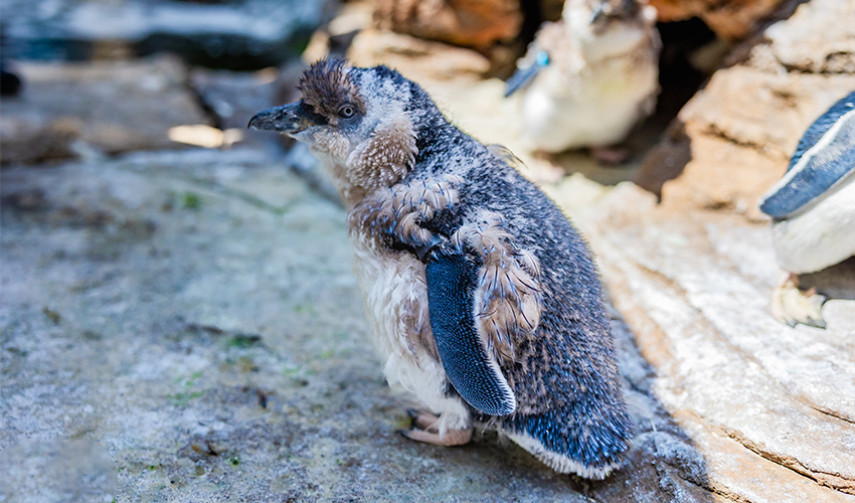
Peak Plump
Little Blue Penguins pack on the pounds before molting season — it’s like their version of meal prepping! In the wild, molting is a vulnerable time, since they’re exposed to predators and the elements. So, penguins tend to avoid swimming and hunting for food altogether while they shed their feathers.
To prepare, they bulk up by eating more fish than usual. This extra fat fuels them through the two to three-week “no-swim” fast on land. For example, our Little Blue Penguins typically eat about six capelin — a small schooling fish — a day. But in the pre-molt phase, their appetites nearly triple, and they may eat up to 15 capelin in a day! To put it in perspective, that’s like going from eating one quarter-pounder cheeseburger to eating four in a day!
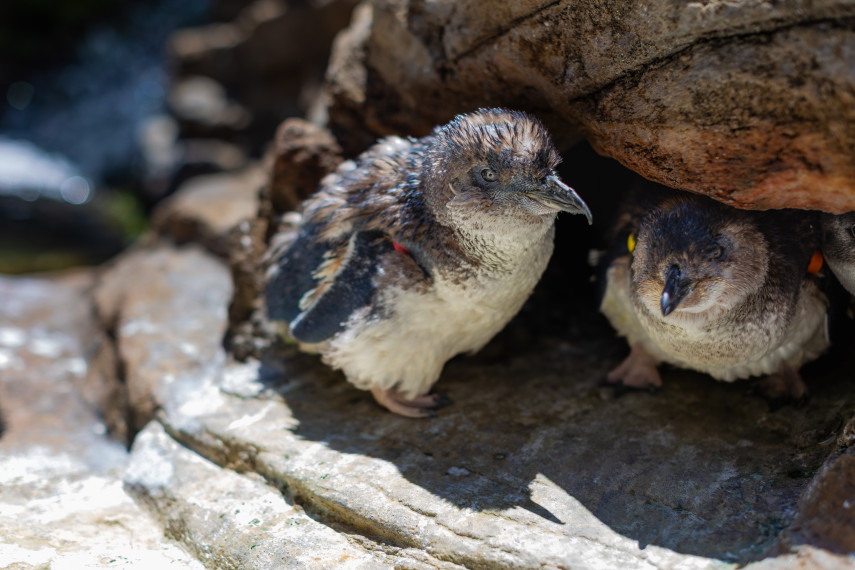
Take a look at how much some of our penguins bulked up before molting.
Both White/White and Brown/Yellow nearly doubled in size to prepare for their molt, going from 2.43 to 4.32 pounds and 2.36 to 4.12 pounds, respectively.
Both Red/Purple and Yellow/Orange also bulked up impressively to prepare for their molts, going from 2.12 to 3.58 pounds and 2.52 to 3.98 pounds, respectively.
Once a Little Blue Penguin reaches its “peak plump,” it’s time for the next phase.
Out with the Old, In with the New
Ever wonder why penguins look a little fluffy when they molt? It’s because new feathers are growing in and pushing out the old ones from underneath. Essentially, the new feathers help “lift” the old ones out, allowing them to “drop” their old feathers over the course of about two to three weeks.
Until their fresh new feathers grow in completely, penguins aren’t fully waterproof. That’s why they stick to land while they molt – no swimming, no fishing, just chillin!
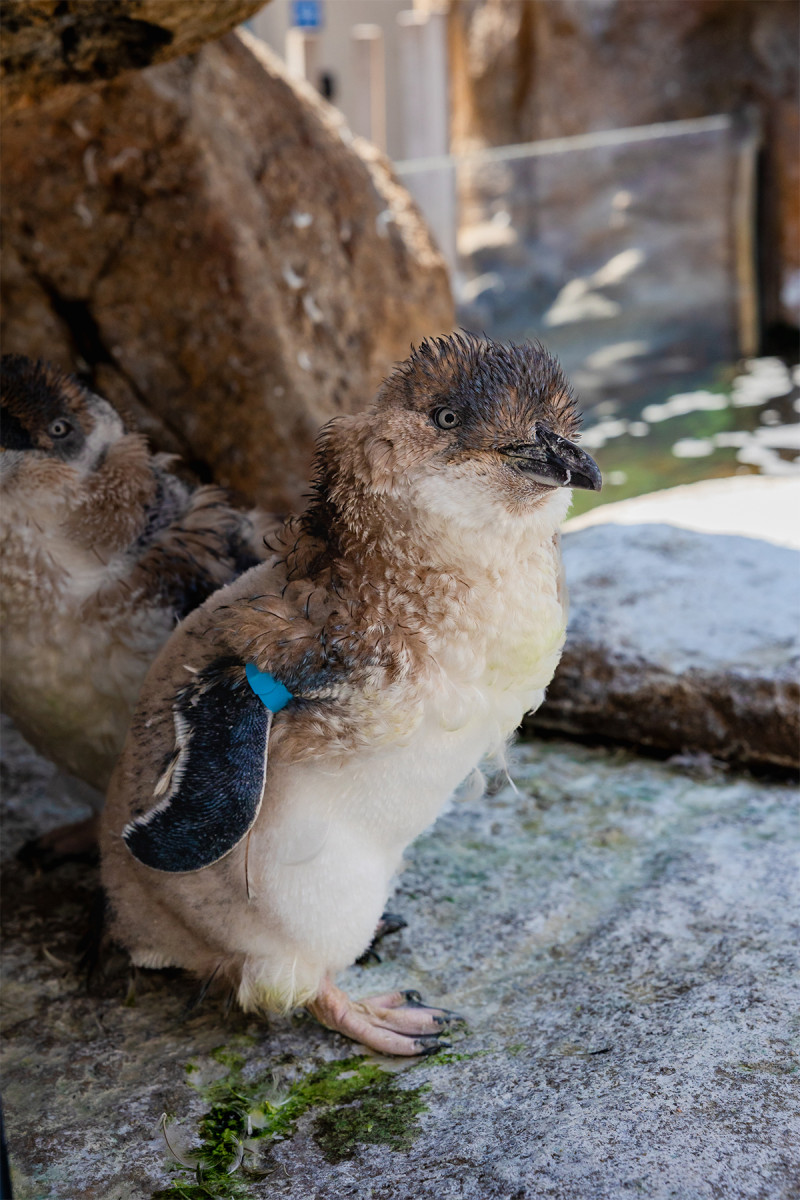
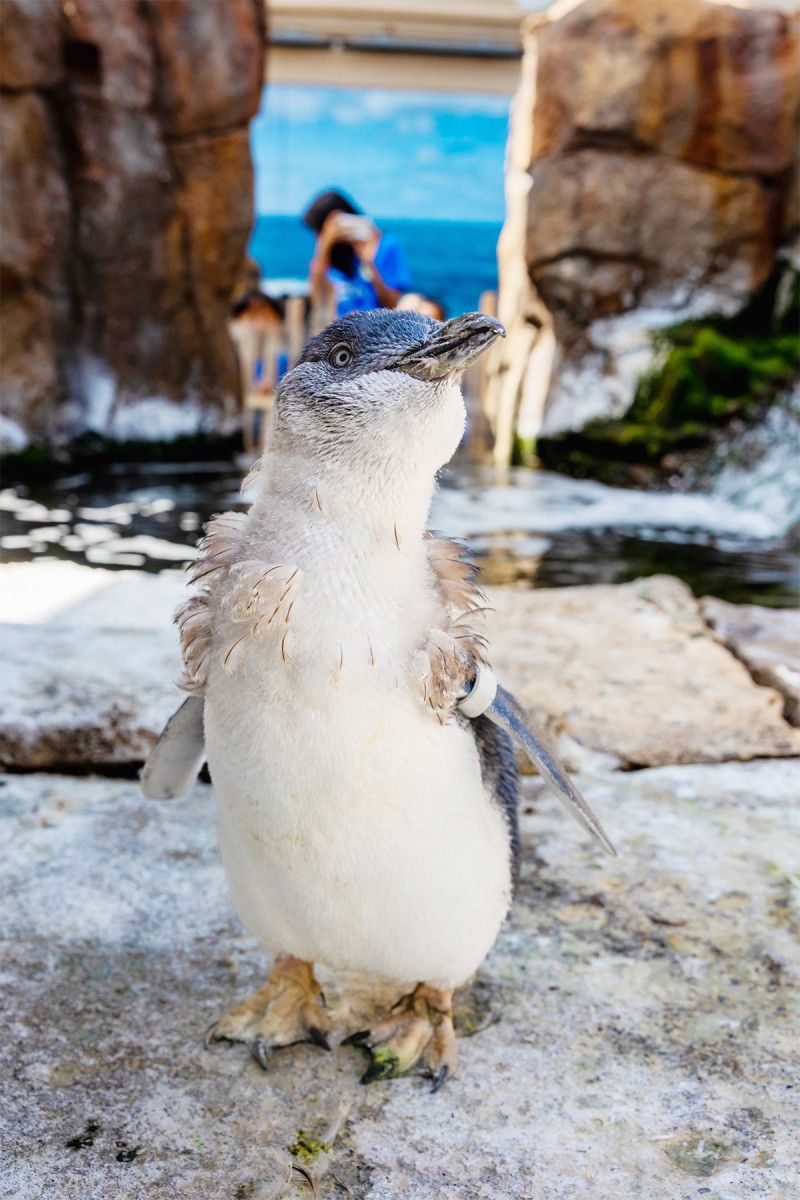
After completing their molt, our Little Blue Penguins can dive back into their normal routine, now sporting a brand-new, sleek set of feathers. Their vibrant dark blue backs and lighter bellies aren’t just eye-catching. It’s also a form of camouflage known as countershading that helps them blend in while swimming in the open ocean.
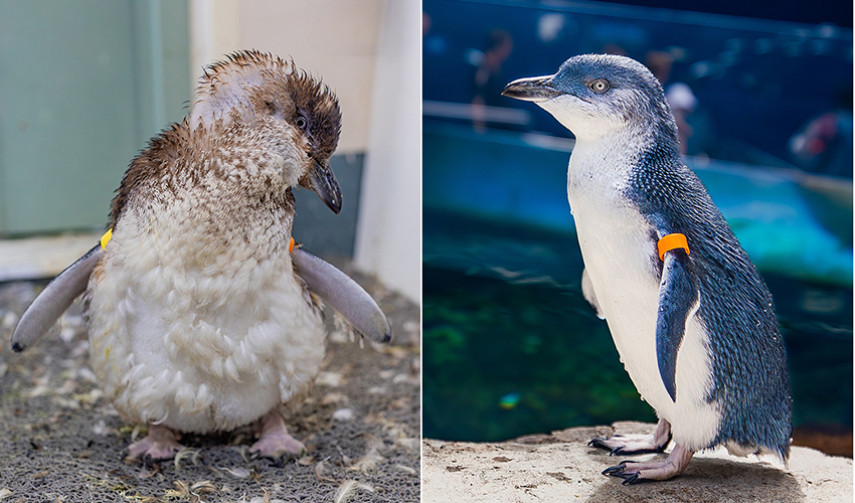
This vibrant blue coloration, one of their most iconic features, appears especially bright after a fresh molt. Little Blue Penguins get this unique coloration from the structure of their feathers. Light refracts through microscopic layers, creating an iridescent effect that appears blue to our eyes.
About Birch Aquarium at Scripps